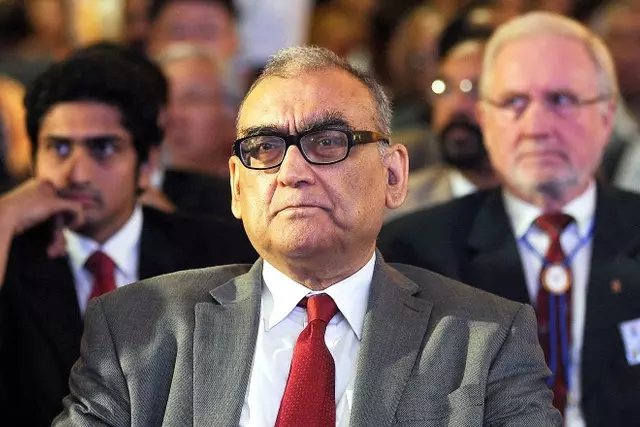Recently a function was held in Delhi in which a book titled ‘The Basic Structure Doctrine’ written by my good friend retired Justice Rohinton Nariman, former Judge of the Indian Supreme Court, was released
In this function, the speakers, including senior lawyers Kapil Sibal and Abhishek Manu Singhvi, Justice Arjun Sikri, and the author himself, spoke highly and waxed eloquent about the Supreme Court judgment in Kesavanand Bharati vs Union of India, in which the basic structure doctrine was propounded.
This doctrine said that the basic structure of the Constitution cannot be amended.
Now two problems immediately arise about this doctrine :
(1) What is the basic structure of the Constitution ? It is a vague expression, and has nowhere been mentioned or defined in the Constitution. So any judge can declare any provision in the Constitution to be part of the basic structure, making it unamendable even by a unanimous vote of all members of both Houses of Parliament, which would result in judicial anarchy.
(2) Article 368(1) of the Constitution states :
” Notwithstanding anything in this Constitution, Parliament may in exercise of its constituent power amend by way of addition, variation or repeal any provision of this Constitution in accordance with the procedure laid down in this article “
This provision enables Parliament to amend any provision in the Constitution. There is nothing in Article 368 which says that the basic structure of the Constitution ( which as stated before is a vague, undefined expression ) cannot be amended.
So by a judicial verdict the Supreme Court has amended Article 368, by adding a clause that despite the power in Parliament to amend any provision in the Constitution, a provision belonging to the basic structure cannot be amended.
Is this a legitimate excercise of judicial power ? It is well settled that in the garb of interpretation the Court cannot add or delete from a statute. Moreover, amendment to the Constitution can only be done by Parliament in accordance with Article 368, not by Courts.
I regret that the Indian Supreme Court has often violated this cardinal principle of interpretation.
For instance, there is no mention of any Collegium system for appointment of Judges of the Supreme Court or High Court. Yet by judicial verdicts in the Second and Third Judges cases Articles 124 and 217 of the Constitution have been amended by introducing the Collegium system which is unknown to the Constitution, by what was called by Lord Cooke as ‘a sleight of hand’ ( see his article ‘Where angels fear to thread’)
Similarly, in its recent decision in State of Tamilnadu vs Governor of Tamilnadu the Supreme Court has practically amended Articles 200 and 201 of the Constitution.
I have expressed grave reservations about this judgment in my article below :
In that article I have urged Courts to practice judicial restraint, instead of indulging in judicial activism.
As observed by the Supreme Court in Divisional Manager, Aravali Golf Club vs Chander Haas, 2007 ( vide para 20 ) :
” Judges must know their limits and not try to run the Government. They must have modesty and humility, and not behave like Emperors. There is broad separation of powers under the Constitution and each organ of the State, the legislature, the executive and the judiciary, must have respect for the others and must not encroach into each others domains “
Failure to follow this principle will only set in a strong reaction from the other organs of the state, which will result in the wings of the judiciary being clipped.


